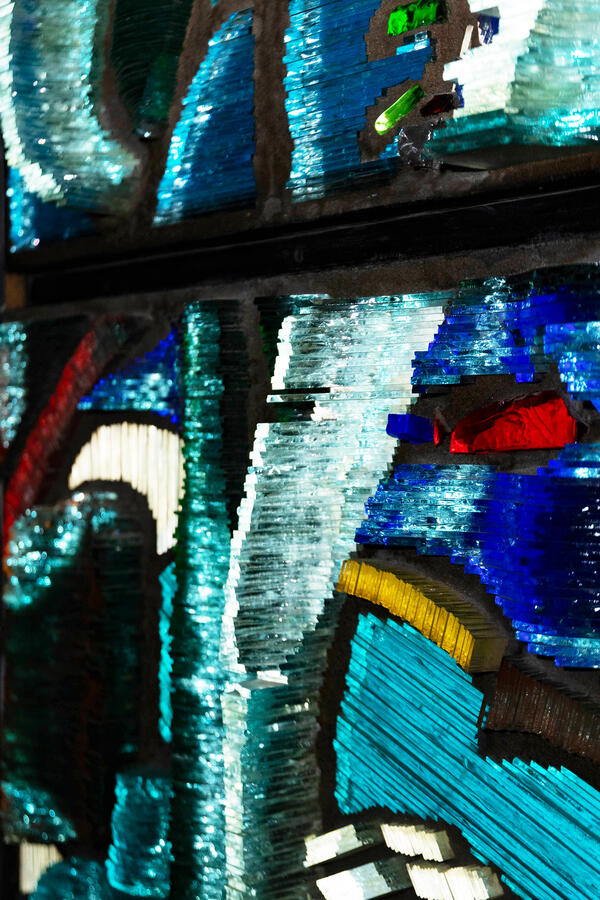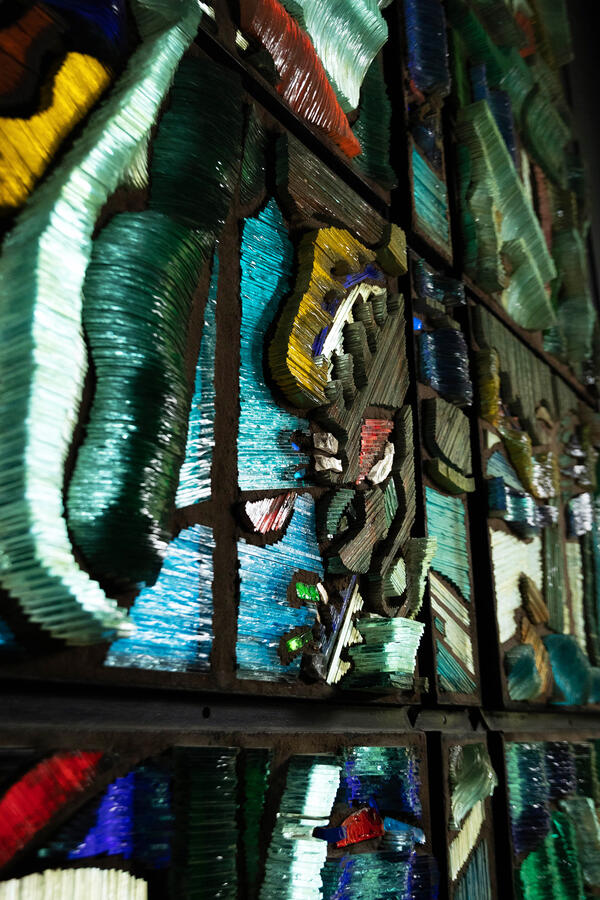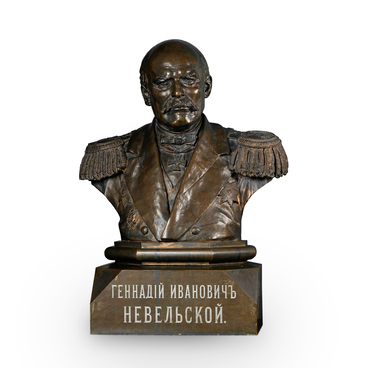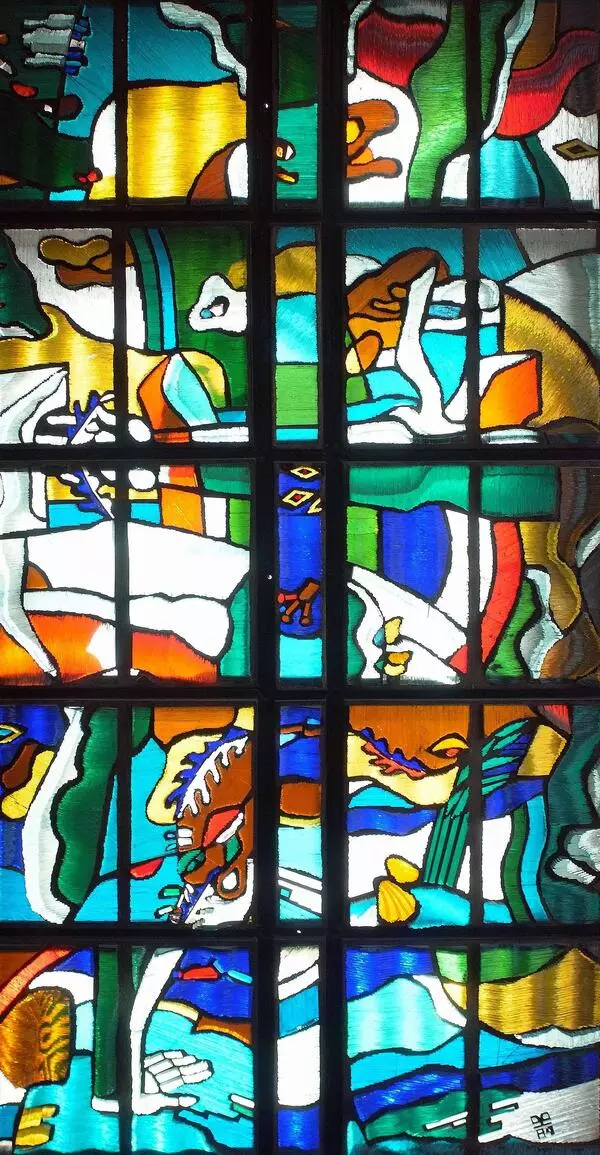The stained-glass panel “The Amur” from the collection of the Vladimir Arseniev Museum of Far East History was created by Nikolay Vdovkin, a muralist and enameler, for the regional exhibition “Soviet Far East” held in Vladivostok in 1985.
After graduating in 1972 from the Higher Art and Industry College (former Stroganov College), Department of Interior and Furniture Equipment, Nikolay Vdovkin moved to the Far East. The stained-glass panel “The Amur”, executed in the technique of laminated glass, is one of the most significant works created by the artist during this period.
The stained-glass panel consists of 15 fragments assembled into a single work of art. The flora and fauna of the Far East is depicted in a stylized form: hillsides, river bends, rocks, ferns, shells, seagulls, and fish. In the late 1970s, a new type of artistic thinking was formed in the visual arts, focused on the comprehension of landscape as a human environment. For the artist, the Amur is not so much a specific river as an embodiment of the philosophical category of eternal movement, change, evolution, which is the same for both nature and people. “The Amur” stained-glass panel epitomizes the image of nature as a human’s home, where he or she feels part of a single organism. It is not by chance that the Amur is depicted anthropomorphic.
During the preparation of the
panel, the artist studied and experimented with the glass produced in Russia,
which had different colors at the ends: display glass of green color, display
polished glass of navy blue, blue colors, completely transparent white display
glass (6 millimeters), and regular window glass (3–5 millimeters) of different shades. What was also
new was the way the stained glass was composed and manufactured. In foreign
analogs of that time, the backgrounds were filled with “bridge” concrete.
Nikolay Vdovkin used a compound based on sand, which ensured the durability of
the construction. The undeniable advantage of the stained-glass panel is its
coloristic solution based on contrasting combinations of bright colors, which
was essential in the situation of the restrained color palette of the Soviet
period: the kaleidoscope of colors of “The Amur” looks very dramatic in the
light.






